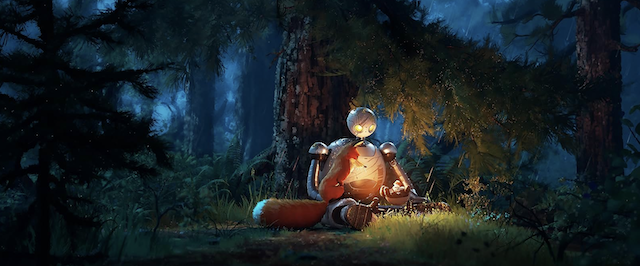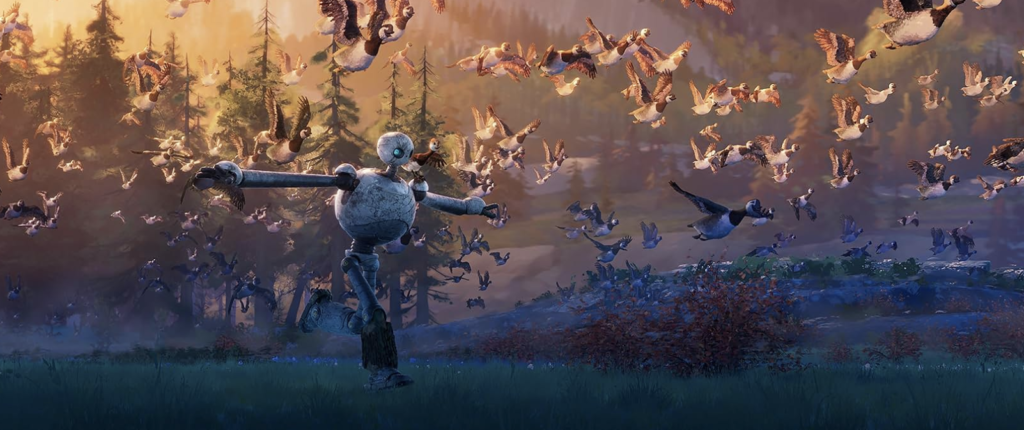
@Courtesy of DreamWorks Animation
Chris Sanders is one of the best directors when it comes to contemporary animation. Going back to astonishing examples like Lilo & Stitch or How to Train Your Dragon, it is clear how he is capable of developing humanity and mixing it with distinctive traits of so-called “monsters”. In some ways this same process happens in The Wild Robot, where the main character nicknamed Roz lands on an inhabited island after a crash. Here the robot is forced to face and adapt to the wilderness, little by little making contact with all the different animals who populate the island. In particular, Roz starts taking care of a newborn duck. The relationship that Roz will develop with Brightbill – this is how she naked the duck – will change his purpose and most important his vision of the world.
There are so many ways The Wild Robot addresses some of the most important contemporary issues of our time. First of all, and probably the most obvious, the relationship between nature and technology. The screenplay shows a good deal of intelligence avoiding the sterile contraposition between environment and progress, because it seems we, as a society, are unfortunately beyond that. What The Wild Robot shows instead is how a wise and precise use of the right technology could help to preserve echo-systems, maybe even help them to prosper or fight extinction.
There is really no rhetoric in Chris Sanders’ movie about this topic, the same way there is none in showing how nature can be ruthless, violent and unforgiving. There is a lot of loss in The Wild Robot, both accidental and by violent acts. Because this is wilderness, and the movie doesn’t hide it behind some kind of “feel-good” mise en scene, quite the opposite actually. Especially in the first thirty minutes the movie is almost shocking, as much as it is beautiful in the representation of the island. Seeing Roz struggling among these magnificent trees, the deep forest or the gigantic waves, is visually great cinema.

@Courtesy of DreamWorks Animation
In the first part The Wild Robot is built through a speed of narration that never becomes overwhelming, as it happens with a lot (too much) contemporary entertaining cinema. In such a dark, threatening environment Roz shines even more with her lightning parts and all the other funny accessories the robot owns. Another great idea is to team up the rationality and the logic of the humanoid character with a fox named Fink, who represents everything tricky, feral or threatening in the environment. The development of their mutual respect and then friendship is poignant, never cheesy, most likely the best part of the movie, also because Lupita Nyong’o and Pedro Pascal are highly effective in giving nuances and depth to their characters.
If the first part of The Wild Robot works on different levels and guarantees to the audience thoughtful entertainment, the third act is weaker, not because of some real issue but because of the lack of a good way to end the story. The conflict that has been built in order to create tension and the necessary action is not really interesting, or at least not at the level of what we’ve been experiencing before. This way the story ends in a less thrilling way that it started, but that doesn’t ruin the experience of an animation movie with a heart and a sincere meaning in its storytelling. Chris Sanders has created another experience in which the wonder of the images is as powerful as the emotions provided by the characters and their narrative arc. It is definitely more than enough to enjoy The Wild Robot.
Rate: B-
If you like the articles, share your thoughts below!
Check out more of Adriano’s articles.
Here’s the trailer for The Wild Robot:

